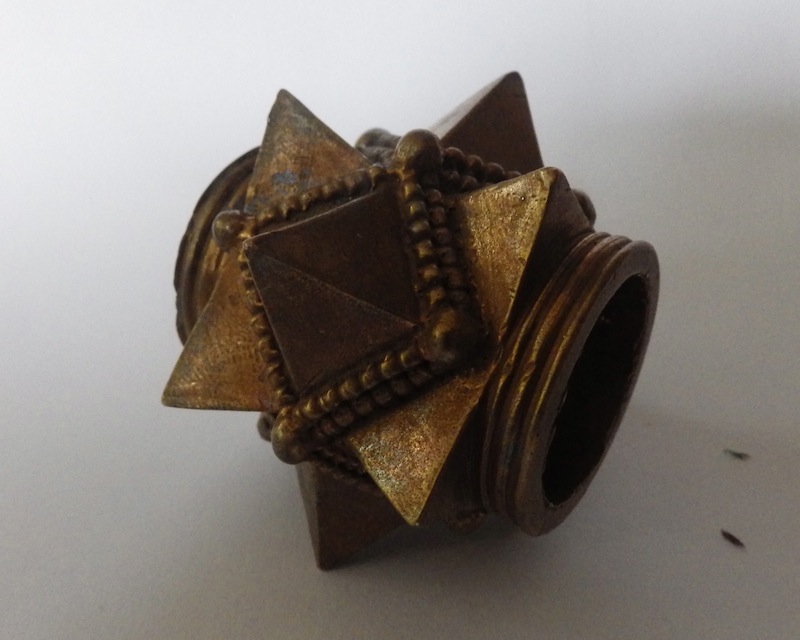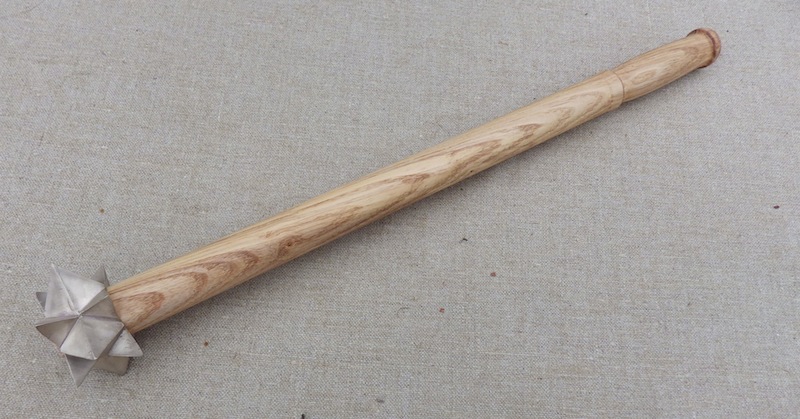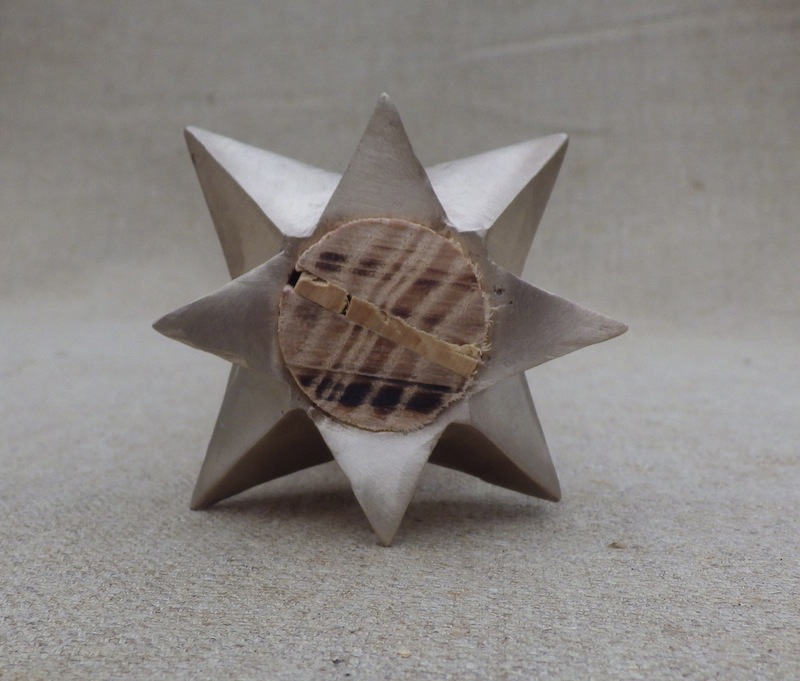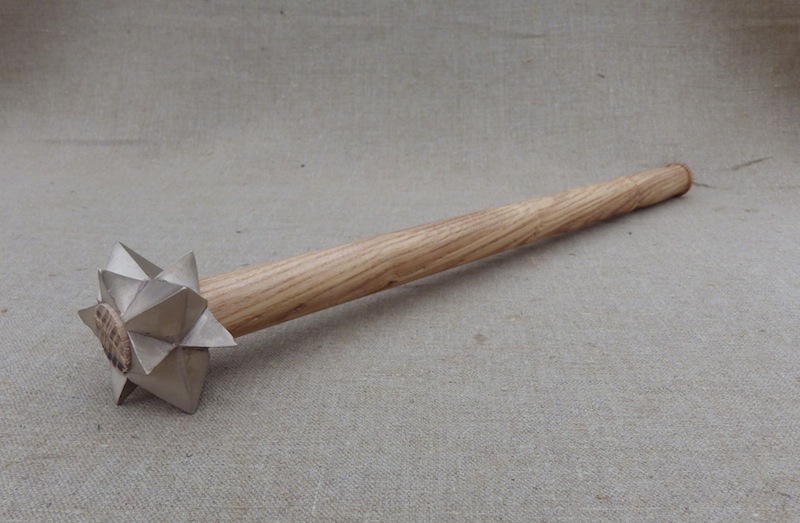Kiripichnikov, a Russian academic put together a great paper on mace types found in Russia and many of these were found along the trade routes as you would expect. These routes largely followed the rivers of course and many of these were used by the Rus Vikings on the way back and forth to Byzantium. This has meant that the Type IV mace which was contemporary with the Rus Vikings has come to be associated with Byzantium and perhaps used by the Varangian guard.
These early type IV maces had the 4 prominent pyramids along the equator of the mace and and the 8 'half pyramids' along the top and bottom that define the type IV. However they also have rows of decorative beading strung around the pyramids and were usually solid.
These early type IV maces ran from around 8th -11thC.
After this they seem to migrate toward Europe and at the same time they lose the beading. As solid maces, the spikes cannot protrude too much or the weight would become too high to wield, so they often start to become hollow. Being hollow allows the spikes to become larger and that ends up with a mace similar to this one.
Maces similar to this have been found all over Europe and 2 14thC examples have been found in the UK.
I am almost certain I saw a French Army issue mace of type IV pattern that was issued in the 19thC, so if this is the case, the same basic design ran for 1200 years.
The mounted mace shown here is 83mm across, cast in bronze and complete weighs 435g = less than 1lb.
Anyway I hope you like the result.
Tod





